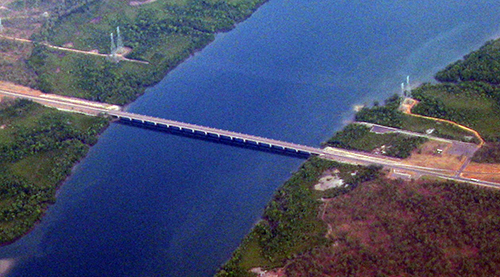Dec 30 2015 Lessons in recruiting a powerful sponsor or champion from the Elizabeth River Project
 From The Intersector Project Case Library: River Restoration in Virginia
From The Intersector Project Case Library: River Restoration in Virginia
The Elizabeth River, 23 miles of estuary on the southern end of Chesapeake Bay, has one of the busiest commercial ports in the world. A history of industrial pollution, however, contributed to sediment contamination and “toxic hotspots” along the river. In response, Marjorie Mayfield Jackson helped launch the Elizabeth River Project in 1993 to “restore the river to the highest practical level of environmental quality.” Its 2003 “State of the River” report highlighted a particular hotspot in the southern branch of the river at Money Point, where, for decades, wood treatment facilities allowed creosote to pool on the river floor. The study showed cancer rates of 38 percent and precancerous lesions of 83 percent among the small mummichog fish. Marjorie spearheaded the cleanup of Money Point, collaborating with industries, citizens, and governments. Their joint efforts helped to lower cancer rates among the mummichog to less than seven percent in the initial cleanup area. Stakeholders have worked collaboratively on dozens of other projects, including reducing future pollution and restoring wetlands, setting a goal for the entire Elizabeth River to be both swimmable and fishable by 2020.
From 1995 to 2003, Ray Moses, former Admiral of the National Oceanic and Atmospheric Administration, was the President of the Elizabeth River Project. His connections with business, City, and federal leaders as well as his environmental expertise brought credibility and legitimacy to the Project. The Project also benefited from the support of the four mayors in the four cities that make up the Elizabeth River watershed – Norfolk, Portsmouth, Chesapeake, and Virginia Beach. All four mayors sat on the Project’s original Leadership Review Board and endorsed the original watershed action plan. The mayors also cost-shared a Corps of Engineers project to restore wetlands and plan for sediment cleanup on the river.
Ray’s leadership and the mayoral involvement in the collaboration illustrates a tactic The Intersector Project Toolkit refers to as Recruit a Powerful Sponsor or Champion — the engagement of a person, a group of persons, or an organization committed to leveraging their influence, resources, and skills to assist the collaboration in achieving its objectives. Well-respected, influential individuals or organizations can provide access to resources, lend legitimacy and prestige, and attract public attention.
Sponsors, while not usually involved in the day-to-day operations of the collaboration, provide prestige, access to networks, and convening power. The collaboration may enlist a sponsor to build perceptions of legitimacy, to develop relationships with constituencies or stakeholders that are key to the collaboration’s goals, or to gain access to financial and/or non-financial resources that the collaboration does not possess internally. Champions, who often are involved in the day-to-day operations of the collaboration, typically offer expertise on the issue targeted by the collaboration and/or processes that are critical to the collaboration’s efforts. The collaboration may enlist a champion to provide expertise that is beyond the capacity of internal stakeholders, increasing perceptions of credibility among partners and external stakeholders. If the collaboration does not involve sponsors or champions, it misses the opportunity to benefit from the unique influence, resources, and skills that these individuals and organizations provide, ultimately limiting its capacity.
The Elizabeth River Project’s collaborative cleanup effort resulted in a substantial improvement in the health of the river. The Project helped remove 36 million pounds of PAH contaminated sediment at Money Point. The cancer rates among the mummichog have dropped to less than seven percent in the initial cleanup area, indicating a significantly better environment for these fish and a healthier ecosystem overall. Additional reports show that more than 20 species of fish have relocated along the river, as well as families of river otters, who do not settle in polluted waters. The ERP projects that, given early successes, the Elizabeth River will be both swimmable and fishable by 2020. Continuing efforts include:
- The presentation of River Stars Pollution Prevention and Stewardship Award for industry, highlighting the efforts of local business.
- The opening of Paradise Creek Nature Park, a 40-acre nature park, that showcases forested shore revitalization and wetland restoration in partnership with the City of Portsmouth.
- In 2009, the launch of “America’s Greenest Vessel,” the Learning Barge, a steel barge with a live wetland on board. The 120-foot barge has hosted more than 20,000 students.
- In 2011, the expansion of Elizabeth River Project stakeholders to include homeowners along the Lafayette branch of the Elizabeth River. The 1,700 homes in the River Star Homes program are committed to seven steps, including modeling “lawn makeovers” to reduce fertilizer dependence.
